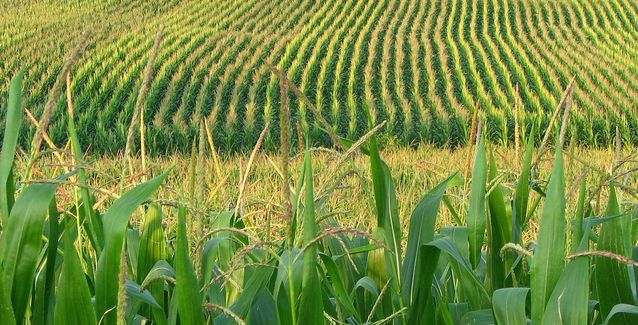Corn acres in Arkansas projected to decline; 2023 a tough year for milled rice
by February 28, 2024 4:12 pm 399 views

Corn acres are expected to decline in 2024 and rice milling yields during 2023 were down and that could continue this year, according to agriculture experts at the 2024 Arkansas County Production meeting recently held in Stuttgart.
Excess corn production during 2023 will cause prices to fall this year. Moisture and temperature problems led to the rice milling issues last harvest.
The meeting, hosted by the Arkansas County Extension Office at the Rice Research and Extension Center in Stuttgart, had more than 70 in attendance and covered topics related to rice, soybean and corn production in the state.
“These annual meetings are a great tool for us to share the most recent research from our specialists and to initiate conversations with the growers in our county,” said Grant Beckwith, Arkansas County extension staff chair. “Getting our growers prepared for the upcoming growing season is our top priority, and these meetings are a great way to help us do that.”
Nick Bateman, extension entomologist for the University of Arkansas System Division of Agriculture, stressed the importance of insecticide seed treatments in rice for both rice water weevil and billbug management.
“An insecticide seed treatment is one of the most economical things you can do in terms of pest management in rice,” Bateman said. “We do recommend combining different treatments, which brings up questions about the cost. In our research combinations, specifically combining Fortenza and Dermacor pays for itself.”
Bateman recommends the same seed treatment combinations for rice water weevil control and billbugs, with some caveats.
“For billbug control, these combination seed treatments are not bulletproof,” he said. “But they are our best option. We have not yet tested a foliar insecticide that I can confidently recommend for billbugs.”
After a good-yielding corn crop in 2023, Jason Kelley, wheat and feed grains extension agronomist for the Division of Agriculture, said he anticipates a drop in Arkansas corn acres for 2024.
“Last year, the Midwest projected less yield than what they got,” he said. “This led to over two million bushels in carryover, which will lower corn prices this year.”
Although Kelley says there is room for expansion into the poultry industry for Arkansas corn growers, he could see 2024 Arkansas corn acres decreasing by half compared to last year’s acreage.
The biggest issue for Arkansas’ rice crop in 2023 was poor milling yields, according to Jarrod Hardke, extension rice agronomist for the Division of Agriculture.
“The number one conversation I’ve had this year has been milling yields,” he said. “We saw below-average milling yields for most of the state and there are multiple causes for that.”
Hardke said temperatures during grain maturity and heavy dew are two major culprits.
“As we reached grain maturity, daytime temperatures increased to speed drydown,” Hardke said. “At night, temperatures dropped low enough to create heavy dews. This cycle of re-wetting each night followed by baking out in the high daytime temperatures helped lead to rapid drying and excessive grain fissuring.
“Some periods of high nighttime temperatures may have had an additional impact,” he said. “However, chalkiness of grains is an indicator of detrimental high nighttime temperatures and our chalk levels weren’t that out of the ordinary, suggesting that harvest conditions were more of the driving factor for lower milling in 2023.”
As far as how to improve milling yields for 2024, there wasn’t much good news.
“There’s not a whole lot we can do to improve our milling yields,” Hardke said. “We can encourage an early harvest and try to harvest at a higher grain moisture, but most of this is up to the weather.”
“To put this into perspective, when we harvest at less than 16% grain moisture, yields will decline,” Hardke said. “Probably half of Arkansas rice was harvested below 16% grain moisture last year.”
